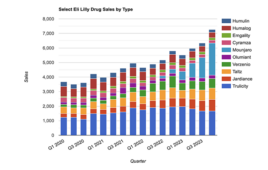Researchers at Duke University
Medical Center
have discovered a way to block the damaging actions of chlamydia, the bacteria
responsible for the largest number of sexually transmitted infections in the United States.
The team, which included Duke University
microbiologists and chemists, designed a molecule that takes away the bacteria’s
self-defense mechanisms.
The therapies that could come
from this discovery mark a new type of antimicrobial approach. Instead of
directly killing the bacteria, they will disarm a central weapon of chlamydia,
and let the body take care of the rest.
Chlamydia infections are
symptomless at the beginning, but can become chronic in women and lead to
pelvic inflammatory disease and infertility as it infects cells in the uterus and
fallopian tubes. It’s generally harmless to men.
While these infections can be
treated with antibiotics, chlamydia can be easily reacquired and arise as a
greater problem again. There are more than nearly three million new cases in
the U.S.
each year.
A virulence factor that
chlamydia produces, called CPAF, emerged as a promising target to shut down
because it plays an important role in protecting the bacteria within hiding
places (vacuoles) in human cells.
CPAF also prevents the human
cell from committing suicide when it senses that it has been invaded by a
pathogen (a common self-defense mechanism), giving chlamydia bacteria an
extended chance to multiply and stay hidden.
Microbiologists and genetics
experts led by Raphael Valdivia, PhD, an associate professor in the Duke
Department of Molecular Genetics and Microbiology, completed the work that
narrowed down the search to an enzyme that chlamydia produces, a protease
called CPAF.
“Chlamydia makes this
master protease that takes over the whole cell and prevents it from mounting an
effective, pathogen-killing immune response,” Valdivia says.
“Chlamydia is unique
among pathogens, in that it can co-exist within humans without causing symptoms
for a long time. This reflects a careful balance between the host and the
pathogen. We think CPAF is central to this balance. Therefore, if we disarm it,
we can tilt the equation toward the human host and mount an effective immune
response that will not only clear the infection but prevent it from
re-emerging.”
The Duke chemists, led by Dewey
McCafferty, PhD, a professor in the Duke Departments of Chemistry and
Biochemistry, designed a molecule that could block the CPAF activity inside of
human cells.
“Typically, to design a
potent, specific, and cell-permeable inhibitor is a complicated undertaking and
inhibitor designs don’t work right away,” McCafferty says. “But in
this case, it worked on the first try.”
“Professor Valdivia’s
group of microbiologists and my group of chemical biologists worked to
establish which qualities we needed to incorporate into a CPAF inhibitor. The
results are very exciting, because we have an inhibitor lead molecule that may
form the basis for a new class of anti-chlamydial drugs.”
They found that when CPAF was
blocked over time by their designed molecule, the protective home that the
bacteria make for themselves within the infected cells degraded, and CPAF no
longer could degrade the proteins in the cell that would normally mount an
immune response to the infection.
When CPAF is inhibited, the
infected human cells effectively “commit suicide,” Valdivia says. “When the infected human
cell dies, so does Chlamydia, and this ends the infection.”
Valdivia said that
the findings could yield new therapeutic approaches that might turn a natural
infection into a vaccination.
“By stopping the cloaking response of the bacteria, we are essentially
revealing where they are in the cell and allowing our own immune system to take
over and destroy the pathogens,” McCafferty says.
Filed Under: Drug Discovery




